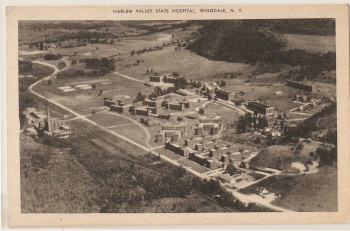Difference between revisions of "Portal:Featured Image Of The Week"
From Asylum Projects
M-Explorer (talk | contribs) |
M-Explorer (talk | contribs) |
||
| Line 1: | Line 1: | ||
{{FIformat | {{FIformat | ||
| − | |Image= | + | |Image= Wingdale.jpg |
|Width= 350px | |Width= 350px | ||
| − | |Body= | + | |Body= One day after the incorporation of the Board of Managers, [[Harlem Valley State Hospital]] came into being. It opened on April 24th, 1924 "for the care and treatment of the insane" as part of an act to discontinue the farm and industrial prison at Wingdale. Buildings A, B and C had already been constructed at the State Road (Route 22) site and money was soon requested to buy adjoining farmland and buildings to build a root cellar, dairy barn, piggery and poultry house for 3000 chickens. With 24 patients admitted on August 11 from New York City and Long Island, the hospital was ready to become part of the history of Harlem Valley. |
}} | }} | ||
Revision as of 05:09, 7 January 2013
Featured Image Of The Week
One day after the incorporation of the Board of Managers, Harlem Valley State Hospital came into being. It opened on April 24th, 1924 "for the care and treatment of the insane" as part of an act to discontinue the farm and industrial prison at Wingdale. Buildings A, B and C had already been constructed at the State Road (Route 22) site and money was soon requested to buy adjoining farmland and buildings to build a root cellar, dairy barn, piggery and poultry house for 3000 chickens. With 24 patients admitted on August 11 from New York City and Long Island, the hospital was ready to become part of the history of Harlem Valley.
